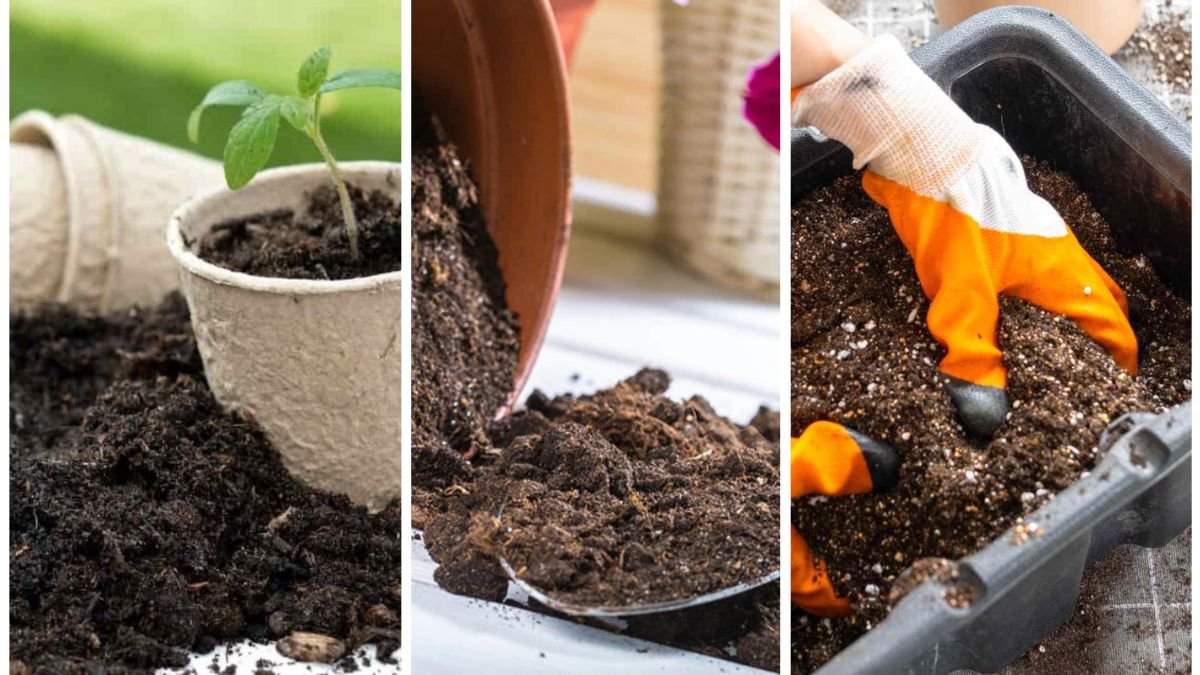Healthy soil is the foundation of every thriving garden. Over time, however, soil can become depleted, compacted, or imbalanced due to continuous planting, heavy watering, and exposure to the elements. Old soil often loses vital nutrients, beneficial microbes, and structure—making it less capable of supporting strong, healthy plant growth. Fortunately, you don’t need to throw out old soil. With the right strategies, you can refresh and revitalize it, turning tired dirt back into fertile ground.
This guide will take you through the signs of exhausted soil, the science behind soil health, and practical steps to breathe new life into it for better gardening results.
Why Old Soil Becomes Depleted
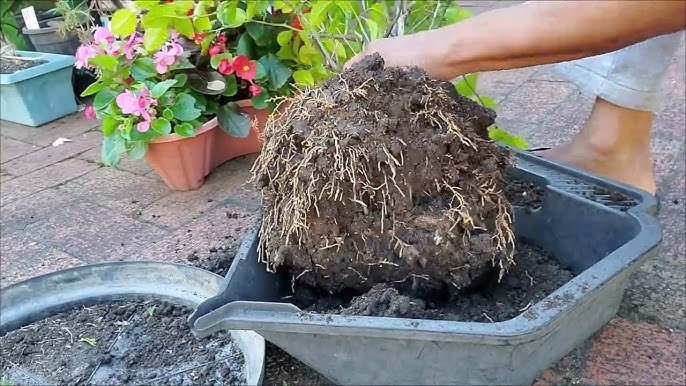
Old soil doesn’t necessarily mean bad soil—it simply means it has been heavily used without replenishment. Common reasons soil becomes exhausted include:
- Nutrient depletion: Continuous planting removes essential elements like nitrogen, phosphorus, and potassium.
- Compaction: Frequent foot traffic, watering, and root growth compress soil particles, reducing air and water movement.
- Loss of organic matter: Without regular amendments, organic matter breaks down and diminishes.
- pH imbalance: Over time, soil may become too acidic or alkaline for optimal plant growth.
- Salt buildup: From fertilizers or hard water, excess salts can harm plant roots.
- Loss of microbial life: Beneficial organisms that support soil health decline without replenishment.
Recognizing these issues is the first step toward revitalization.
Signs That Your Soil Needs Refreshing
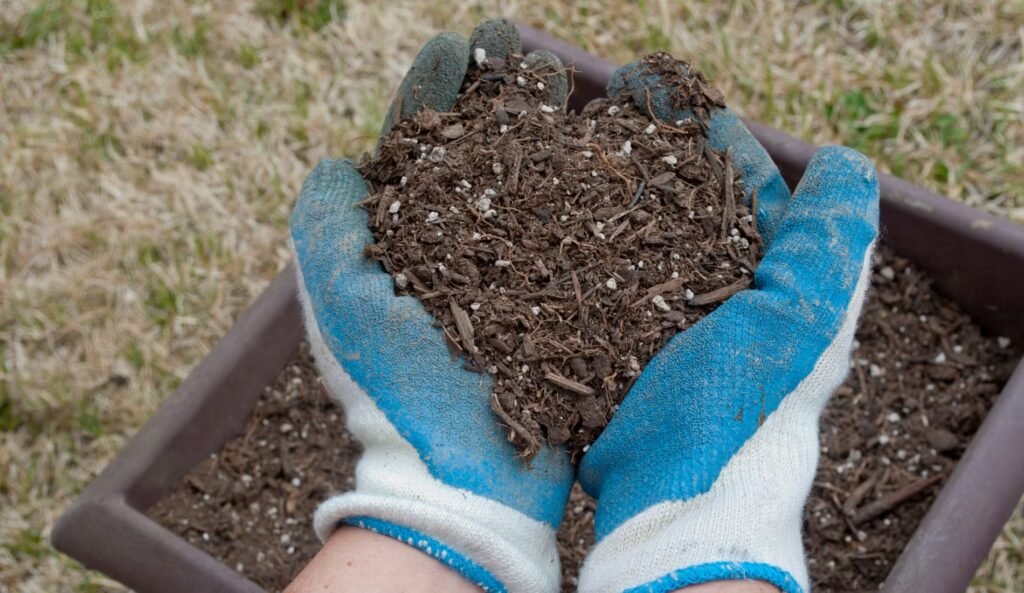
How do you know when it’s time to refresh your soil? Look for these warning signs:
- Plants grow slowly despite proper care.
- Leaves turn yellow or pale, indicating nutrient deficiency.
- Water pools on the surface instead of draining.
- Soil feels hard, dense, or clumpy.
- Weeds thrive, but desired plants struggle.
- There’s little to no earthworm or insect activity.
If you notice these symptoms, it’s time to take action.
Step-by-Step Guide to Refresh Old Soil
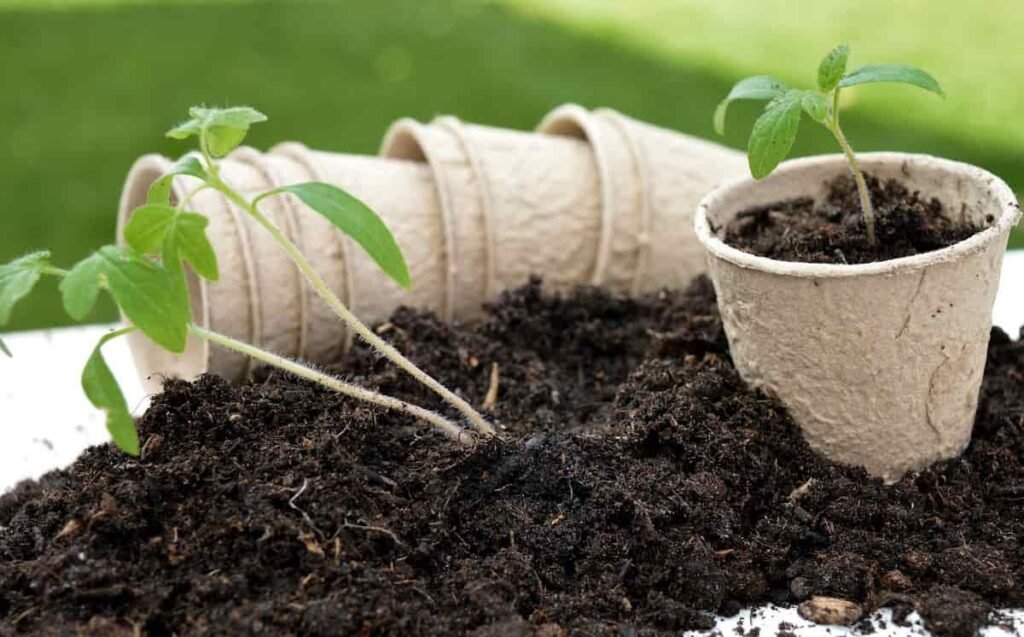
1. Remove Debris and Old Roots
Start by clearing out weeds, dead plant material, and leftover roots. Old roots decompose slowly and can harbor pests or diseases, so it’s best to remove them before refreshing the soil.
2. Test the Soil
A soil test is crucial for understanding nutrient deficiencies and pH imbalances. You can purchase a DIY test kit or send a sample to your local agricultural extension service. Results will guide your amendment strategy, ensuring you add what’s truly needed.
3. Loosen Compacted Soil
Compacted soil prevents roots from spreading and restricts airflow. Use a garden fork or tiller to break it up gently. For raised beds or containers, mix the soil thoroughly to restore structure.
4. Add Organic Matter
Organic matter is the lifeblood of healthy soil. Incorporate compost, well-rotted manure, leaf mold, or peat moss to improve fertility, aeration, and water retention. A good rule of thumb is to add 2–3 inches of organic matter and mix it into the top 6–8 inches of soil.
5. Rebalance Nutrients
Based on your soil test, apply the right amendments:
- Nitrogen (N): Add blood meal, alfalfa meal, or composted manure.
- Phosphorus (P): Add bone meal, rock phosphate, or fish meal.
- Potassium (K): Add wood ash, kelp meal, or greensand.
For general revitalization, balanced organic fertilizers (like 10-10-10) work well.
6. Adjust Soil pH
- Too acidic (low pH): Add agricultural lime to raise pH.
- Too alkaline (high pH): Add sulfur, peat moss, or coffee grounds to lower pH.
Keeping pH in the 6.0–7.0 range works best for most garden plants.
7. Reintroduce Microbial Life
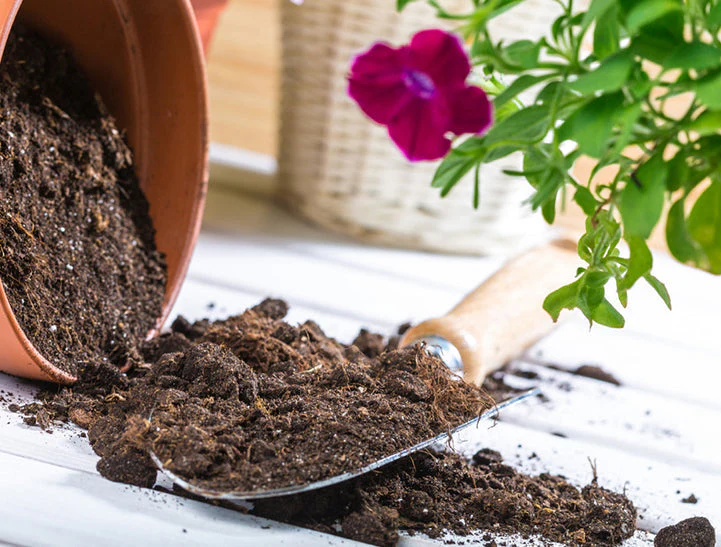
Healthy soil is alive with microbes that recycle nutrients. Boost microbial activity by adding:
- Compost tea or worm castings for beneficial bacteria.
- Mycorrhizal fungi inoculants to enhance root nutrient absorption.
- Mulch to provide food and shelter for soil organisms.
8. Improve Drainage and Structure
If your soil drains poorly, mix in sand or perlite for better aeration. For sandy soils that drain too quickly, add compost or coco coir to increase water retention.
9. Rotate Crops or Rest the Soil
Planting the same crops year after year depletes specific nutrients. Rotate crops or allow the soil to rest by planting a cover crop (like clover or rye) that restores nutrients and prevents erosion.
10. Mulch for Long-Term Health
Finish by applying 2–3 inches of organic mulch (straw, wood chips, shredded leaves) on top of the soil. Mulch conserves moisture, regulates temperature, and slowly adds nutrients as it decomposes.
Revitalizing Container Soil
Container soil often becomes depleted more quickly than garden beds due to limited volume and frequent watering. To refresh potting soil:
- Remove old roots and debris.
- Mix in fresh compost or new potting mix (about 30–50% fresh material).
- Add slow-release fertilizer.
- Check drainage holes to prevent waterlogging.
For very old container soil, use it in garden beds instead of discarding.
Eco-Friendly Ways to Revitalize Soil
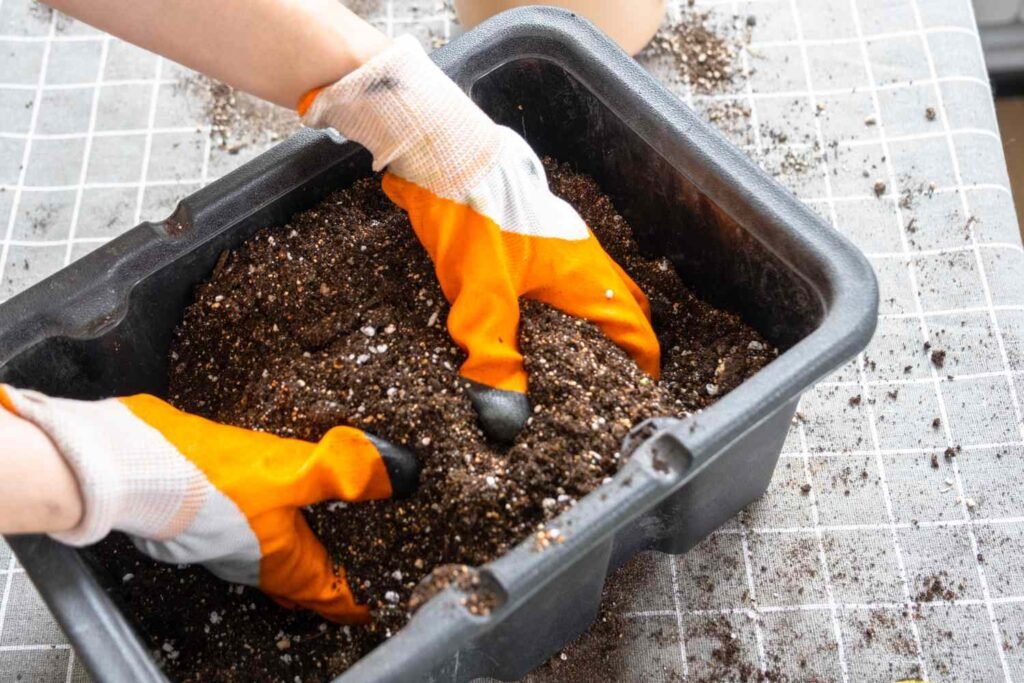
- Compost kitchen scraps: Banana peels, coffee grounds, and vegetable waste enrich soil naturally.
- Green manures: Grow nitrogen-fixing cover crops (peas, beans, clover) and till them back into the soil.
- Worm composting: Vermicompost adds high-quality nutrients and beneficial microbes.
- Leaf recycling: Collect fallen leaves, shred them, and work them into the soil.
These methods reduce waste while building soil fertility sustainably.
Mistakes to Avoid
- Over-fertilizing: Leads to nutrient imbalances and salt buildup.
- Using raw manure: Can burn plants and introduce pathogens.
- Ignoring soil pH: Nutrients become unavailable if pH is off-balance.
- Relying on chemical fertilizers alone: They boost growth short-term but degrade soil structure over time.
- Over-tilling: Breaks down soil structure and disrupts beneficial microbes.
Long-Term Soil Care Practices
Revitalizing soil isn’t a one-time fix—it’s an ongoing process. For lasting results:
- Add compost every season.
- Rotate crops annually.
- Use organic mulches consistently.
- Limit chemical inputs.
- Encourage biodiversity with mixed planting.
These habits create soil that continuously supports strong, resilient plants.
Conclusion
Old soil doesn’t mean useless soil. With a little effort, you can transform tired, compacted dirt into a rich, living medium that nourishes plants for years to come. By removing debris, testing and amending nutrients, reintroducing organic matter, and supporting microbial life, you restore balance and fertility.
Think of soil as a living ecosystem—when cared for properly, it becomes more productive each year. Instead of discarding old soil, use these techniques to refresh and revitalize it, ensuring your garden continues to thrive season after season.
With patience, consistent care, and the right amendments, your soil will reward you with healthier plants, bigger harvests, and a greener, more vibrant garden.
